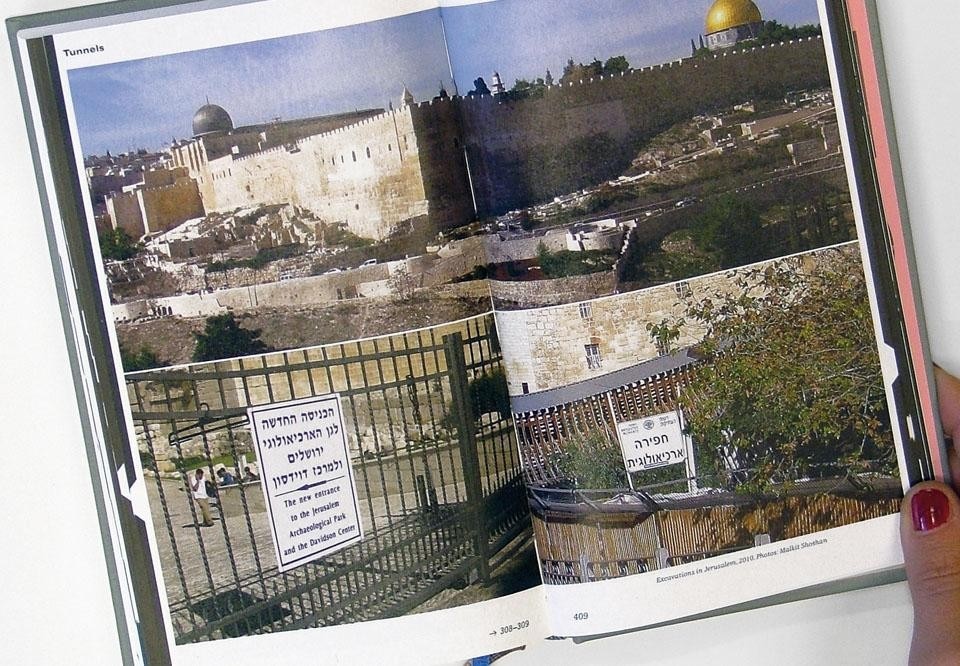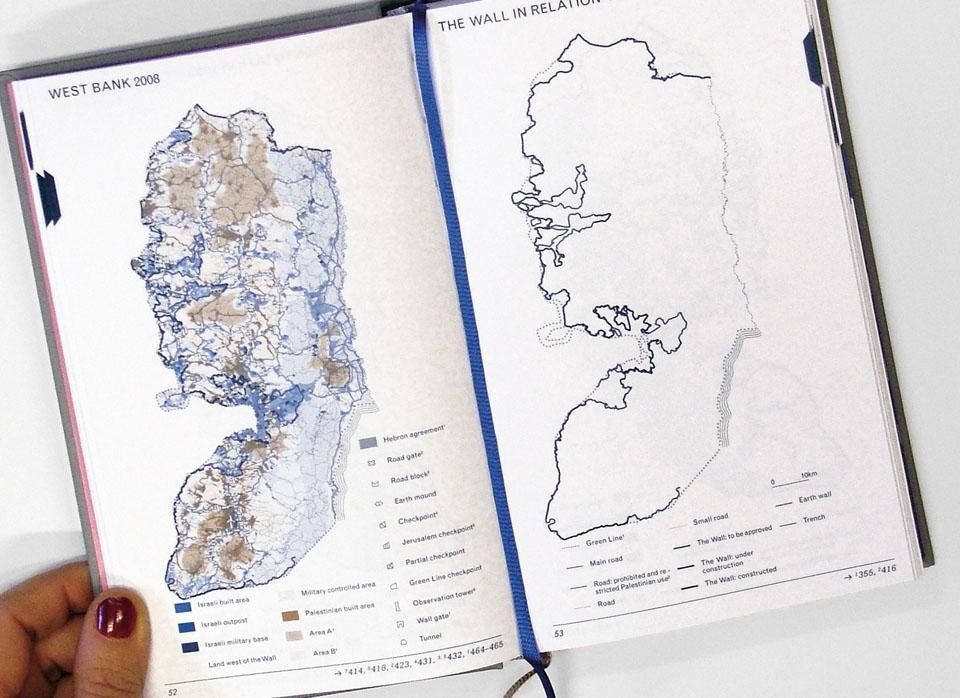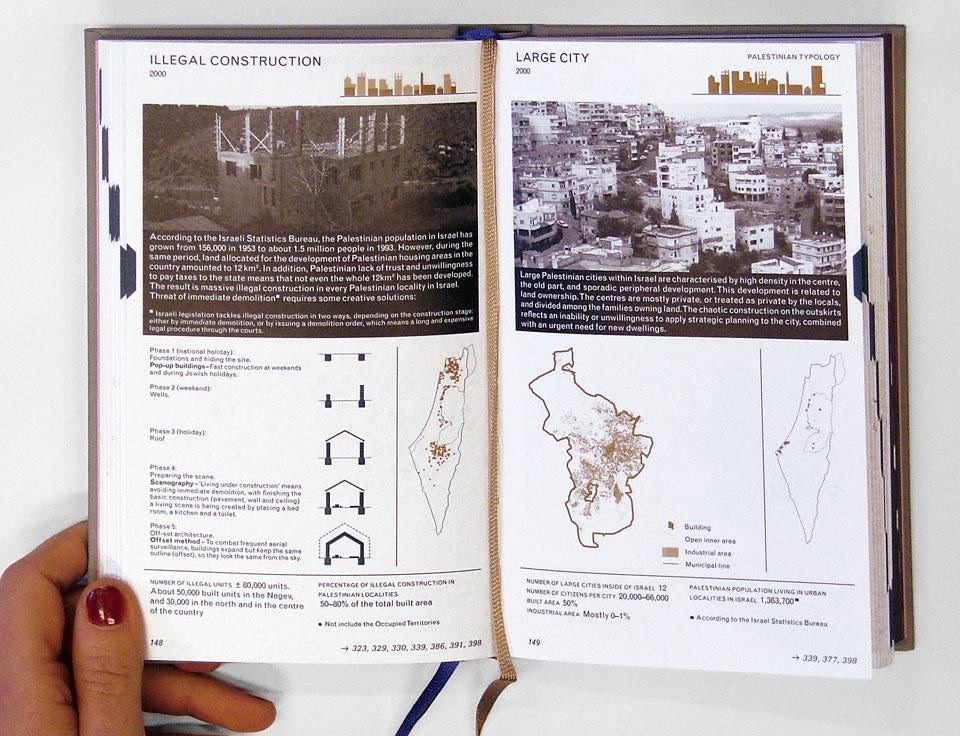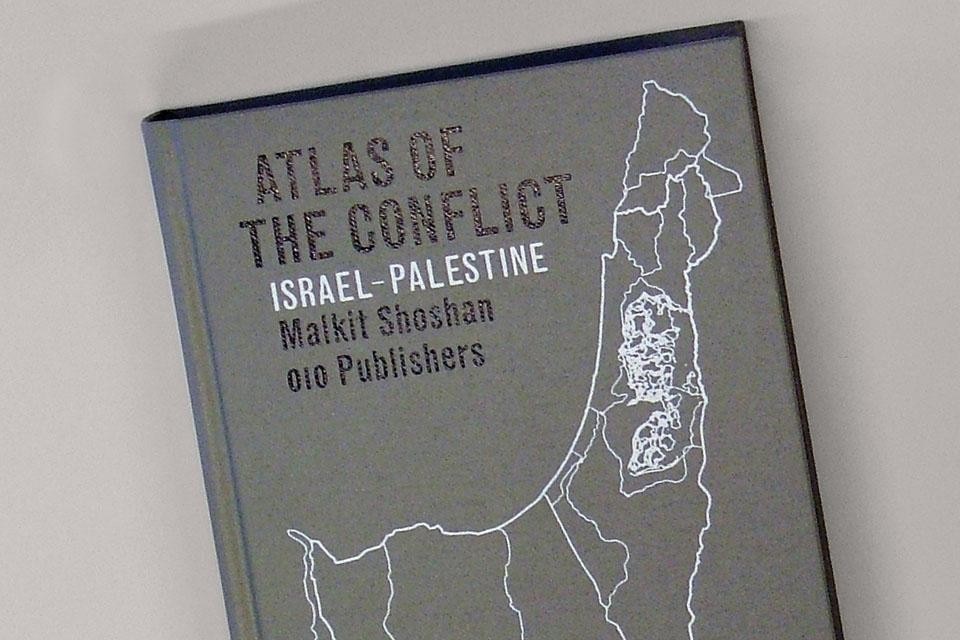Malkit Shoshan's book is a fascinating attempt to show and tell the story of the Israeli-Palestinian conflict through the use of maps and graphs that allow the reader to view the area's territorial, political and demographic transformations. The atlas, which includes more than 500 maps and diagrams, is divided into ten chapters that focus on different themes: the border, the construction of the wall, settlement patterns and types, demographic change, land ownership, control of water resources, territorial planning, the area's important (and strategic) cultural and archaeological heritage and a focus on the contested city of Jerusalem.
At the end of the map section, in a section called "lexicon," the author has collected definitions, stories, events, technical information, pictures and images which complement and enrich the maps.

All of the book's maps and sections are interconnected through a system of multiple links that enable the reader to move from graphic display to textual information and vice versa, with the goal, not always simple, of connecting the different parts without resorting to a linear order. Shoshan's archival research, data organization and graphic representation is undoubtedly a major and original effort. The Israeli-Palestinian conflict is based on territorial control and population distribution, natural resource management and the fragile demographic balance between Jews and Palestinians. It follows that the use of maps is an effective and compelling way of describing and narrating the conflict. In addition, the maps allow the reader to easily view the changes that have concerned the boundaries separating Israeli from Palestinian territories from 1947 to the present, as well as the evolution of the construction of the separation wall, the movement of the two ethnic groups and the process of Jewish settlement in the Territories.

In this regard, some of the maps in the volume contain extremely useful and interesting data, for example, the location of Jewish settlements in the West Bank, but they are not enriched with information regarding their geographic configuration (mountains, valleys, rivers, etc.). Such information would help the reader understand the reasons underlying certain choices of settlement locations as well as their impact on surrounding areas.




